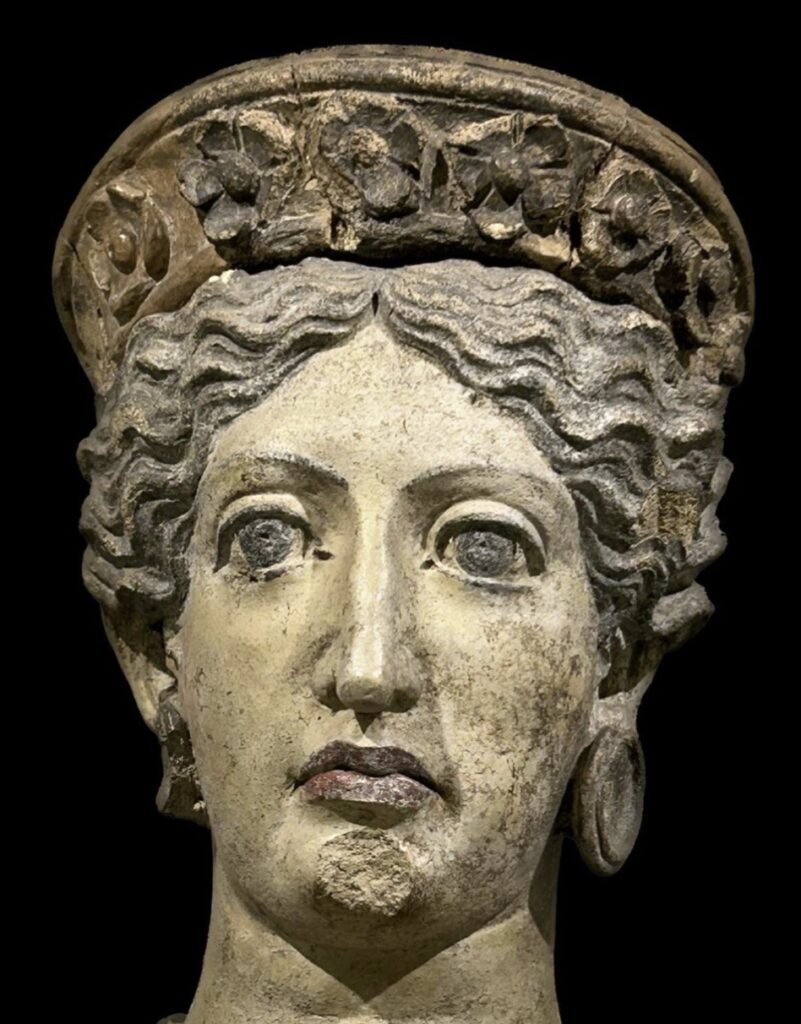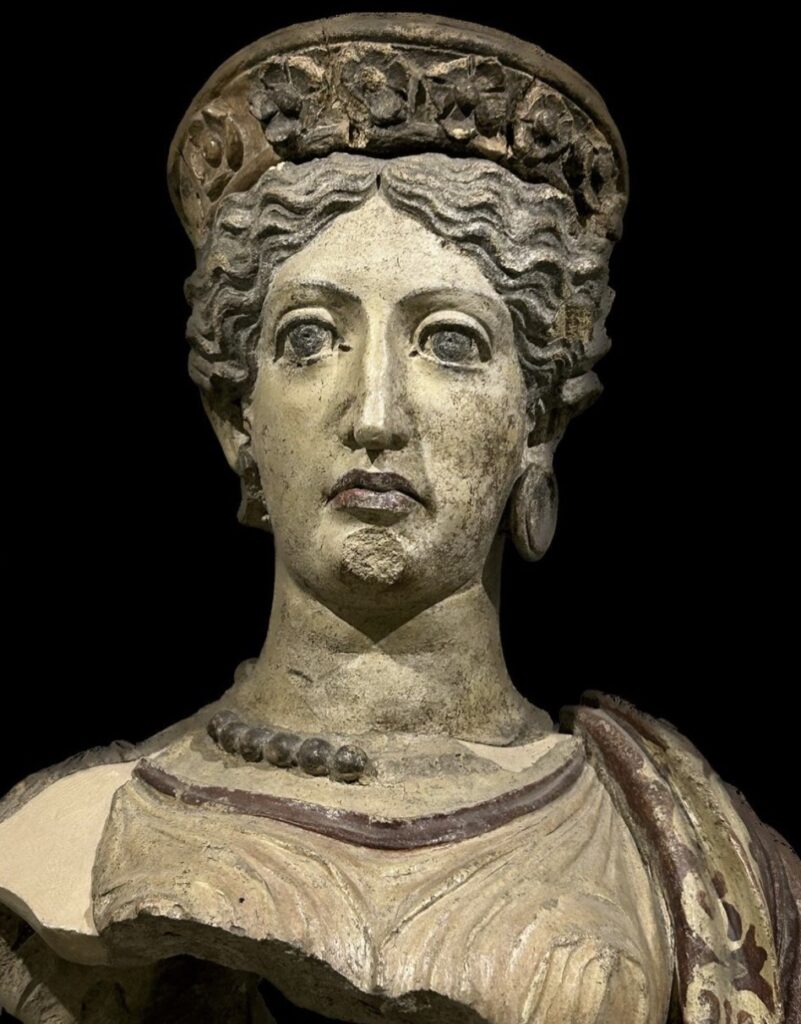Imperious is the first word that this extraordinary terracotta bust of Juno brings to mind. Now displayed at the Villa Giulia in Rome, she was found in a Falsiscan sanctuary at Celle, and dates to ca. 380 B.C.
Sumptuously robed and crowned, the queen of the Olympian pantheon gazes somewhat down her aquiline nose at us mortals. And the rendering of those commanding, melting, over-large eyes makes “ox-eyed” (a curious epithet of the goddess) suddenly wonderful and fitting here: doe-eyed rather than ‘cow-faced’ as it is sometimes translated.


Life-sized terracotta sculpture was the domain of hugely accomplished coroplasts hailing from regions and time-periods where there was a paucity of readily available marble, fine limestone, or sandstone. Such sculpture was technically difficult (even if the medium was cheap) to produce, but the moulding, modelling and rendering of detail on the clay before drying allowed master artists to play with surface textures and patterns (look at that diadem! The bifurcating drapery between her bosoms!) on par with the best sculptors in bronze and marble. And (a huge boon to modern viewers and archaeologists), as in this case, a staggering amount of polychromy and gilding is preserved.
The place to visit to feast your eyes on such material (almost an overwhelming amount, but helpfully arranged according to find-spot) is certainly the Villa Giulia – nestled at the edge of the Villa Borghese, it is a treasure trove.




